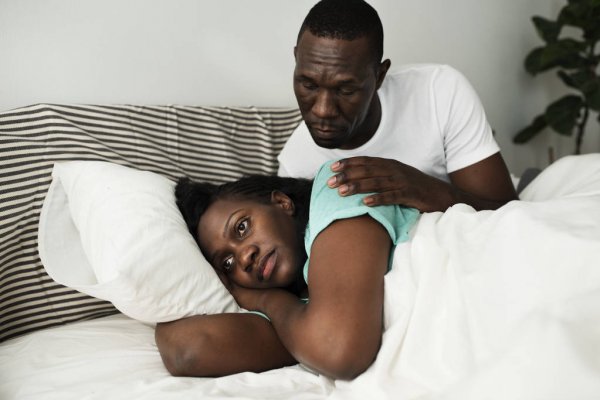Fertility is an unpredictable thing. By “fertility” we are talking about the human body’s reproductive capability, what enhances or diminishes it, or even how long it lasts. Many women (and men) don’t have much of a grip on these realities of fertility.
Last week we examined some of the common causes of female factor infertility and focused on the Fallopian tubes and tubal factor infertility.
We established that it requires a clear understanding of the female reproductive system to appreciate why women could be infertile, not just during a given month, but over the course of a lifetime.
For female infertility, lifestyle matters. Diet, exercise, weight, cigarettes, caffeine and alcohol have an impact on reproductive health. While a woman never really knows how fertile she is until she actually starts trying to have a baby, the issue of reproduction, or fertility is one of the body’s most subtle and complex functions.
How fertile a woman is a complicated equation with genetics, physiology, lifestyle, environment and age.
A woman can’t know how fertile she is until put to the test, it is important to keep in mind that a woman can become a mother at almost any age.
It is a fact that majority of women don’t understand their own reproductive life cycles. No one is often surprised that a 45-year-old woman is having trouble conceiving, but it never occurs to anyone that a 30-year-old or even younger may have fertility problems as well.
Generally good health is often not a good indicator of fertility. A normal gynaecological check-up isn’t the same thing as a normal fertility workup. Even a healthy lifestyle doesn’t guarantee fertility.
A woman’s fertility generally begins its decline much earlier than expected, and quite a number of women tend to overestimate the age at which their fertility begins to diminish. Women who delay first-time parenthood until after 30 usually discover that age compromises fertility.
Biologically, female fertility diminishes with age, beginning in the late 20s, statistically speaking. Barring any extraordinary medical conditions or physiological anomalies, there are two reasons for this trend.
The first is the attrition of eggs. Every woman is born with all the eggs she is ever going to have, usually seven million or so. By the time the average female hits puberty, there are about 250,000-300,000 remaining eggs in her ovaries.
During each menstrual cycle, one egg matures ripe for fertilization and is released, but many others are not. This is how women start with 7 million eggs, ovulate about 400 times and then run out.
The 2nd reason is that eggs age along with the rest of the body and older eggs have a greater incidence of chromosomal problems that increase the likelihood of miscarriage. So it is possible for some women in their late 30s and a few in their 40s to conceive, carry and deliver healthy babies.
The probability of this happening without medical intervention, however, becomes more remote with each passing year. For women under 30, it’s estimated the chance of becoming pregnant in any one cycle is 20-30 percent. By 40, it plummets to approximately 5 percent. But thanks to reproductive medicine, women have much better chances of becoming mothers even with challenge of diminished egg reserve.
Science has refined techniques to help infertile women become biological mothers. The most effective and popular Assisted Reproductive Technique is IVF. Average reproductive health data indicate that IVF works about a third of the time for women aged 30 and under, 29 percent for women in their mid-30s, and 5-15 percent for those 40 and over.
These numbers represent typical success rates in most fertility treatment that strive to provide high quality care. Some fertility clinics won’t accept women over age 44 for treatment unless they are willing to use a younger woman’s egg (donor) to experience pregnancy and birth.
Traditionally, IVF has been used for treating infertile couples because it helps couples to achieve their personal reproductive goals. Most fertility experts recommend IVF for moderate and serious infertility challenges.
It is well known that pregnancy rates with IVF are much better for younger women than for older women, so it’s much more cost effective to have IVF either way. There are views that IVF is not cheap by some standards, but on the other hand, not getting pregnant has a considerable cost attached to it too – the drainage of emotional energy and the time spent waiting and hoping. IVF is the best treatment choice in terms of cost and time effectiveness for many patients.
Equally importantly, IVF gives infertile couples peace of mind that they tried their best – that they gave infertility treatment their best shot. This peace of mind can be priceless. In the past, IVF was considered to be the treatment of last resort – and was reserved for patients who had failed all other treatment methods. Today, it is often the treatment of first choice for many because it maximizes the chance of conceiving no matter the medical problem.
Male and female factor infertility problems are usually over come with a combination of egg and sperm donation or IVF and Intracytoplasmic Sperm Injection (ICSI) or Intracytoplasmic Morphorlogically Selected Sperm Injection(IMSI) among others. ICSI and IMSI are the most successful forms of treatment for men that are infertile and are used in nearly half of all IVF treatments with a male factor. The procedure requires just one sperm, which is injected directly into the egg. The fertilized egg (embryo) is then transferred to the woman’s uterus. In standard IVF treatment, the woman is given fertility drugs to stimulate her ovaries to develop several mature eggs for fertilization.
When the eggs are ready for collection, the woman and her spouse will undergo separate procedures. The husband may produce a sperm sample himself on the same day as the wife’s eggs are collected. If there is no sperm in his semen, doctors can extract sperm from him under local anaesthetic or donor sperm is used.
The sperms are isolated in the lab and injected into individual eggs. Two days later the fertilized eggs become embryos. The procedure then follows the same steps as in IVF. The doctor transplants one or two embryos into the woman’s uterus through her cervix using a thin catheter. If the woman is under 40, she can have one or two embryos transferred. If she is 40 or over, she can have a maximum of three embryos transferred if using her own eggs or two embryos if using donor eggs.





